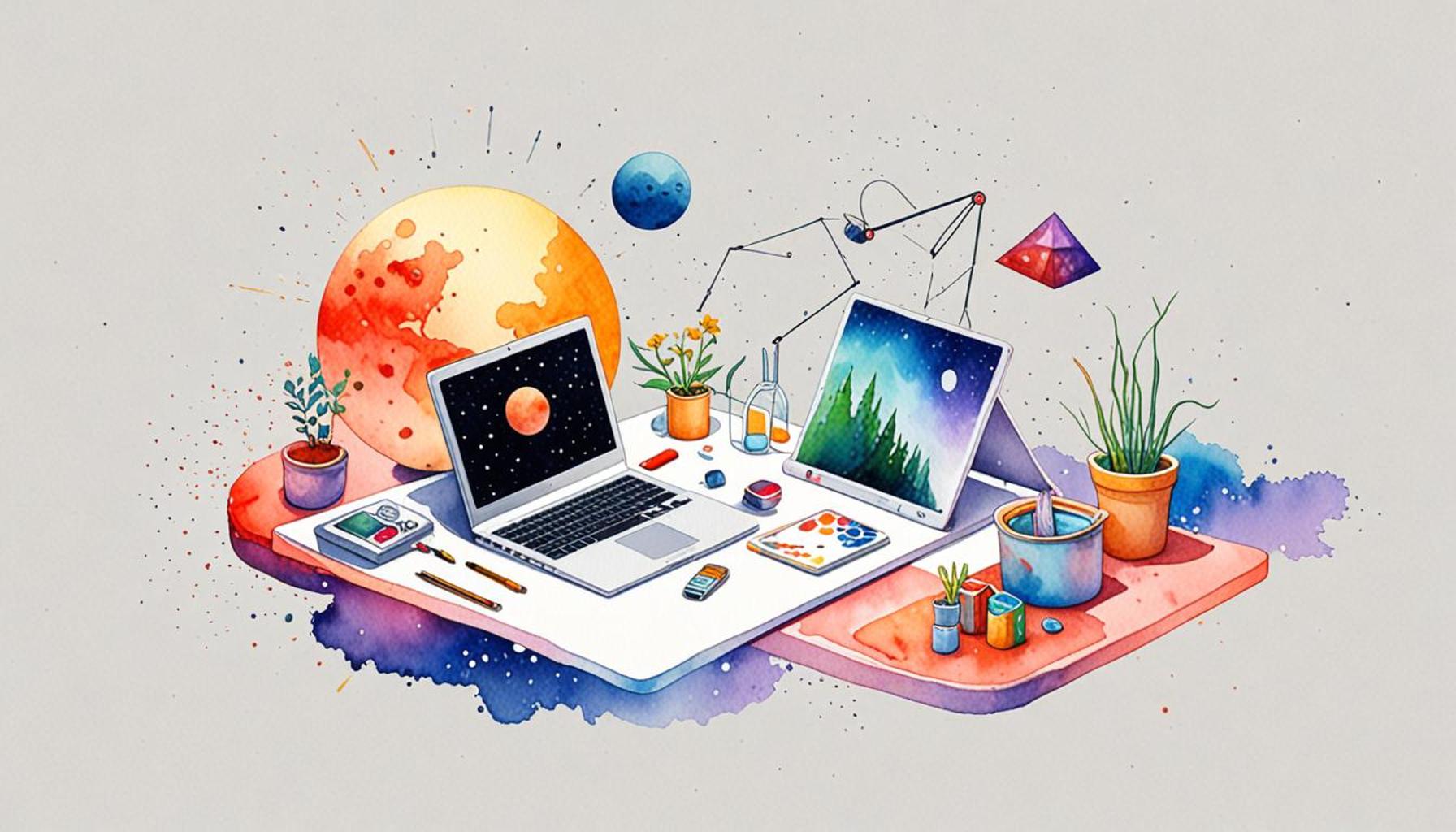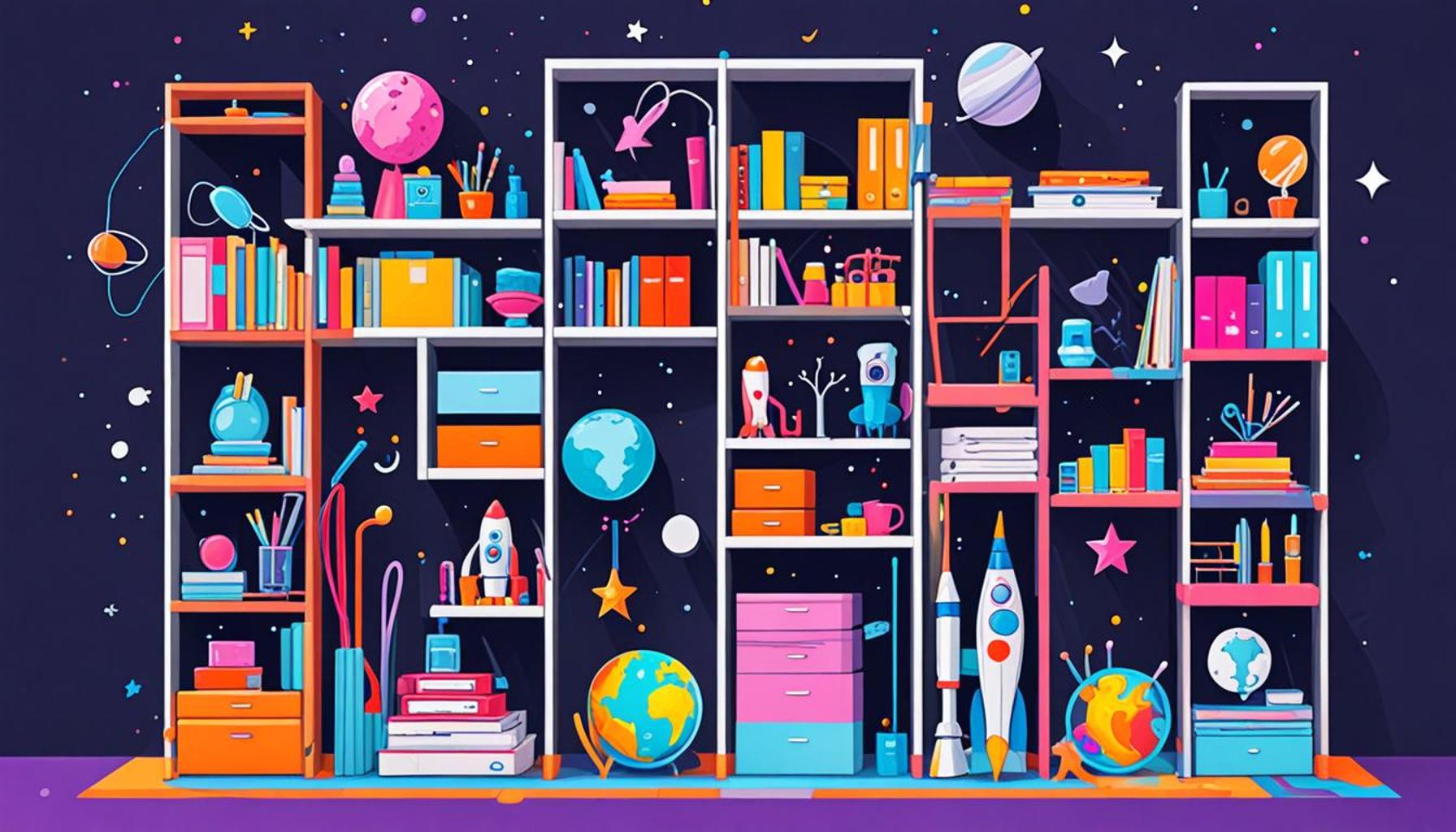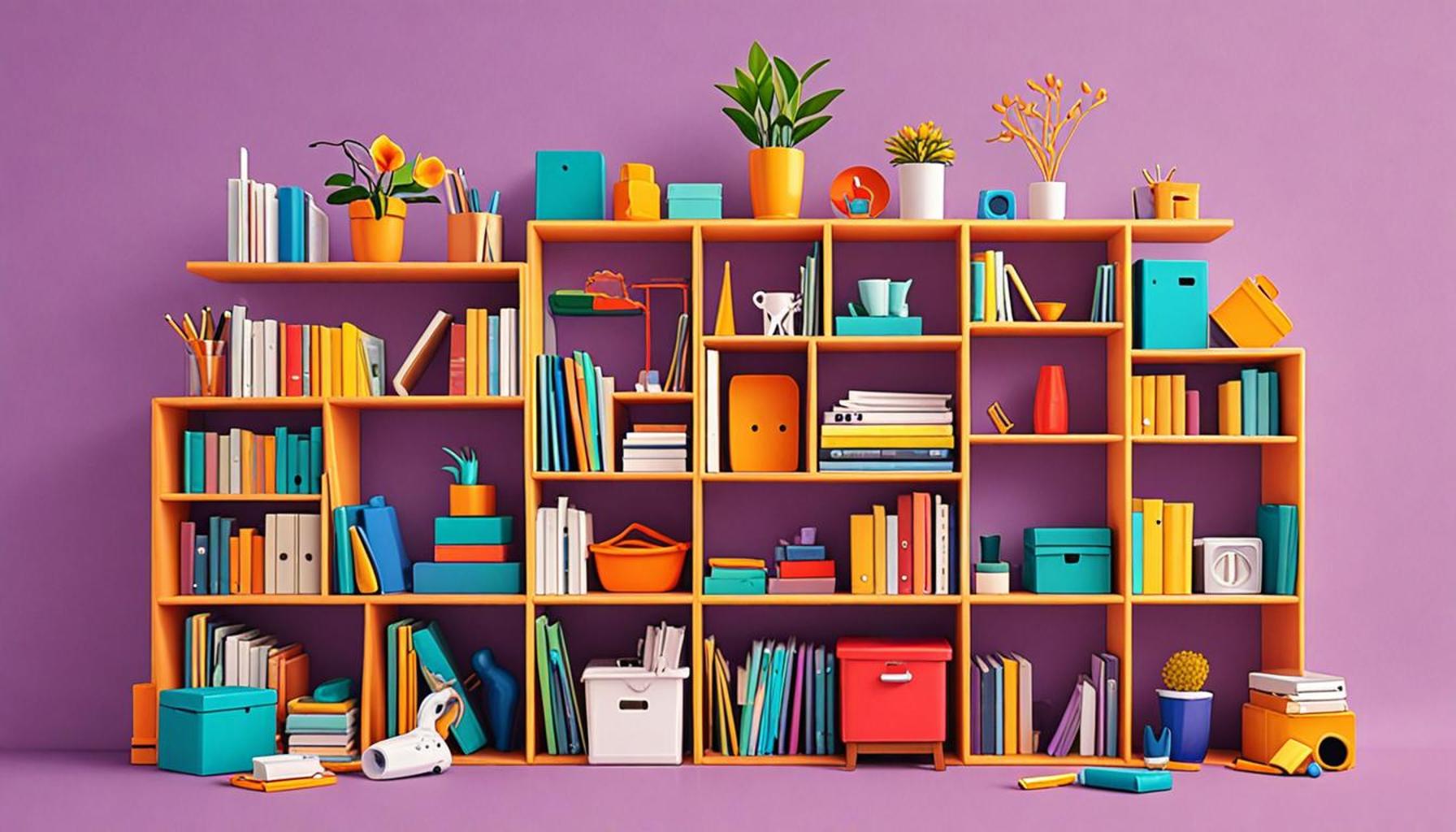The Role of Technology in Enhancing Space Optimization for Minimalist Lifestyles

Understanding the Shift Towards Minimalism
In recent years, a notable shift has emerged within urban environments across the United States, where individuals are increasingly adopting minimalist lifestyles. This trend reflects a collective response to the chaos of modern consumerism, wherein the pressure to accumulate possessions has led to overwhelming clutter and stress. By prioritizing simplicity, many urban dwellers find themselves not only decluttering their physical spaces but also enhancing their mental well-being.
The Role of Technology in Minimalism
As technology evolves, it plays a pivotal role in facilitating this lifestyle change. Smart devices and applications enhance the process of space optimization, allowing individuals to create streamlined environments that are both functional and visually appealing. For instance, the use of smart storage solutions—such as vertical shelving or modular furniture—enables the efficient use of living areas, particularly in smaller apartments. Items like sofa beds or coffee tables with hidden compartments exemplify how multifunctional furniture can save space while maintaining a sophisticated look.
Moreover, home automation systems contribute significantly to this minimalist trend. These systems provide users with the ability to control various aspects of their home environment—from lighting to temperature—through their smartphones or voice-activated devices. For example, smart thermostats can adjust heating and cooling automatically, creating a comfortable ambiance without the need for multiple devices cluttering living spaces. This seamless integration of technology not only enhances practicality but also reduces the need for excess items, reinforcing a minimalist ethos.
Apps and Organization Tools
Further aiding this minimalist movement are mobile applications specifically designed to streamline possessions and declutter homes. Apps like “Sortly” and “Clutterfree” help users catalog their belongings visually. They simplify the process of deciding what to keep, donate, or discard by making it easier to see what one owns. These digital tools encourage mindful consumption, allowing users to assess their belongings critically and make informed choices about their significance and necessity.
The impact of technology on minimalist living extends beyond just physical spaces; it also encourages a thoughtful examination of personal consumption habits. By using tech tools to identify what truly brings joy and utility, individuals can foster a deeper understanding of their needs versus their wants. This introspective journey paves the way for a more sustainable lifestyle, promoting not just spatial efficiency but also ethical consumption practices.
In conclusion, the convergence of technology and minimalism is more than a passing trend; it represents a fundamental shift in how individuals navigate their lives in densely populated urban centers. As more people embrace this lifestyle, they not only reclaim their spaces but also cultivate a sense of peace and fulfillment in a world often overshadowed by excess.
DISCOVER MORE: Click here to learn about the impact of space on well-being
Innovative Solutions for Optimal Living Spaces
As the minimalist lifestyle takes root in cities like New York, San Francisco, and Chicago, the integration of technology within living spaces has become essential for those embracing less-is-more philosophies. The concept of space optimization is now synonymous with modern minimalism, where technology not only assists in decluttering physical spaces but also transforms how we interact with our environments. Smart innovations push the boundaries of design and functionality, enabling individuals to create efficient habitats without compromising aesthetics.
Among the most exciting advances in this arena are smart home gadgets that cater specifically to space-saving needs. For instance, devices such as smart vacuum cleaners and robotic mops not only keep homes spotless but also eliminate the need for bulky cleaning equipment that contributes to clutter. These compact solutions facilitate an efficient cleaning process while aligning with minimalist principles.
The rise of 3D printing technology further accentuates the potential for space optimization. By allowing for custom-designed furniture and household items on demand, 3D printing reduces the need for mass-produced, space-consuming products. Individuals can now produce uniquely tailored items that fit their exact spatial requirements—whether it’s a uniquely shaped bookshelf or a compact table, optimizing every inch of their dwellings without unnecessary extras. This bespoke approach can lead to a significant reduction in both costs and environmental impact, appealing to the eco-conscious minimalist.
Another noteworthy trend influencing minimalist lifestyles is the move towards sustainable technology. As many consumers seek to reduce their environmental footprint, tech solutions designed for energy efficiency play a crucial role. Smart appliances, such as energy-efficient refrigerators and washers, are designed to occupy less space while performing their functions more effectively. This technological pivot not only supports a minimalist lifestyle but also contributes to a more sustainable future.
- Compact Kitchen Gadgets: Innovations in cooking technology, such as multifunctional kitchen appliances, allow for the preparation of varied meals without the need for multiple machines cluttering countertops.
- Smart Lighting Solutions: Adjustable smart lighting systems help create atmospheric environments while negating the need for additional lamps and light fixtures.
- Foldable and Collapsible Items: Furniture that can be easily stored, such as folding chairs or expandable dining tables, exemplifies how modern technology promotes adaptability in small spaces.
The interaction between technology and minimalist lifestyles invites a deeper exploration of how our living spaces can evolve. By allowing for smarter designs and promoting critical thinking about consumption, this technological revolution encourages a purposeful approach to living. It not only helps individuals optimize their spaces but also instills a mindset that values experience over possession. As urban trends continue to shift, relying on innovative technology for spaces becomes not just a practical choice, but a lifestyle imperative.
| Advantages | Explanation |
|---|---|
| Smart Furniture Solutions | Incorporates multifunctional designs, allowing for efficient use of available space. |
| Enhanced Organization Tools | Apps and devices that facilitate efficient categorization and storage of belongings, promoting a clutter-free environment. |
Technology plays a pivotal role in facilitating minimalist lifestyles by providing innovative tools and resources for maximizing space. One of the most notable advantages of this integration is the emergence of smart furniture solutions. These pieces not only serve their primary function but also seamlessly transform into storage units or additional seating, transforming even the smallest of spaces into versatile environments. This evolution in design allows individuals to maintain the minimalist aesthetic while ensuring they possess all essential items.Moreover, the rise of enhanced organization tools, such as mobile applications and smart devices, significantly contributes to the capacity for efficient space optimization. These tools offer intuitive ways to categorize, track, and manage belongings, thus reducing clutter and promoting a more streamlined living experience. Through the inclusion of technology, minimalist lifestyles can achieve their desired level of simplicity, demonstrating how innovation can shape personal environments.
DIVE DEEPER: Click here to uncover the psychology of space
Smart Solutions for Efficient Living
The digital age has ushered in an array of solutions that align seamlessly with minimalist lifestyles. From virtual organizers to integrated smart home ecosystems, technology promises to enhance not just the function of living spaces but their overall essence. With an emphasis on interconnectivity, consumers can take advantage of systems that maximize both efficiency and simplicity.
One of the most compelling aspects of modern technology is the emergence of IoT (Internet of Things) devices. These smart gadgets communicate with each other to streamline various household tasks, meaning that a small living area no longer has to feel chaotic. For example, smart speakers can interface with smart thermostats, lighting systems, and even your coffee maker, allowing users to control multiple functions with a simple voice command or through a mobile app. This level of interconnectedness minimizes the need for physical controls and multiple devices, fitting perfectly into the minimalist ethos.
Moreover, the concept of modular furniture takes center stage in the ongoing revolution of space optimization. Brands like IKEA and resourceful startups have pioneered innovative pieces that can be reconfigured to serve multiple purposes. A sofa that can transform into a bed or tables that can expand for communal dining are a few examples that cater specifically to the needs of urban dwellers. Such flexibility not only conserves space but also reduces the volume of furniture needed, ultimately contributing to a cleaner and less cluttered environment.
- Virtual Reality (VR) Interior Design: Some companies now offer VR tools that enable future homeowners or renters to visualize how furniture and décor will fit in their spaces before making a purchase. This helps in preventing unnecessary acquisitions and promotes sustainable consumption habits.
- Digital Inventory Management: Apps designed to help users track their belongings further contribute to a minimalist lifestyle by enabling individuals to assess what they own and what can be added or removed. By keeping a digital inventory, one can confidently maintain a decluttered living space.
- Wall-Mounted Solutions: The rise of wall-mounted devices—like televisions and speakers—allows for floor space to be preserved. This style not only enhances aesthetics but also encourages creative décor that contributes to a spacious feel.
As the boundary between our physical spaces and digital lives continues to blur, new tech-driven solutions challenge traditional notions of spatial constraints. For those adhering to minimalist lifestyles, embracing these advancements is not merely about convenience; it is about a holistic approach to living. The combined use of technology and minimalism fosters an environment where individuals can cultivate mindfulness and intentionality in their everyday lives.
Data from the National Association of Realtors suggests that the desire for homes with high levels of efficiency and low levels of clutter is more pronounced among younger buyers, specifically Millennials and Gen Z. These generations are increasingly drawn to sustainable living options, which speak to technological solutions tailored toward reducing consumption. By integrating tech into their minimalist spaces, they can achieve a lifestyle that prioritizes experiences and relationships over material possessions, showcasing that true abundance may lie in simplicity.
Ultimately, the marriage of technology and minimalist living represents a significant cultural shift. As the world evolves, it becomes imperative for individuals to re-evaluate not only what they possess but also how technology can enhance their environment, ensuring that the quest for simplicity paves the way for richer and fuller lives.
DISCOVER MORE: Click here to dive deeper
Embracing the Future of Minimalism
In conclusion, the integration of technology into minimalist lifestyles has emerged as a transformative force, reshaping how individuals interact with their living spaces. As we navigate an ever-evolving landscape of smart devices, modular solutions, and digital tools, the capabilities to optimize space and reduce clutter have never been more advanced. This synergy not only supports aesthetic simplicity but also promotes a mindful approach to possessions and consumption.
The rise of smart home technologies, IoT devices, and innovative furniture solutions signifies a cultural pivot. The younger generations, particularly Millennials and Gen Z, are driving a shift towards sustainable living practices that favor efficiency over excess. As they begin to prioritize experiences over material accumulation, technology becomes an ally, offering practical solutions to maintain a minimalist ethos within their homes. Tools such as virtual reality design platforms and digital inventory management apps empower them to make informed decisions that align their physical environments with their values.
While embracing technology in our quest for minimalism, it’s essential to remain conscious of the balance between convenience and clutter. The future will undoubtedly present new challenges and opportunities, pushing us to further reconsider our relationship with our spaces. Ultimately, the thoughtful integration of technology not only enhances the functionality of small living areas but also elevates the very essence of what it means to live intentionally. By exploring and adopting these advancements, individuals can create harmonious settings that enrich their lives, proving that minimalism paired with technology may indeed lead to a more abundant existence.



